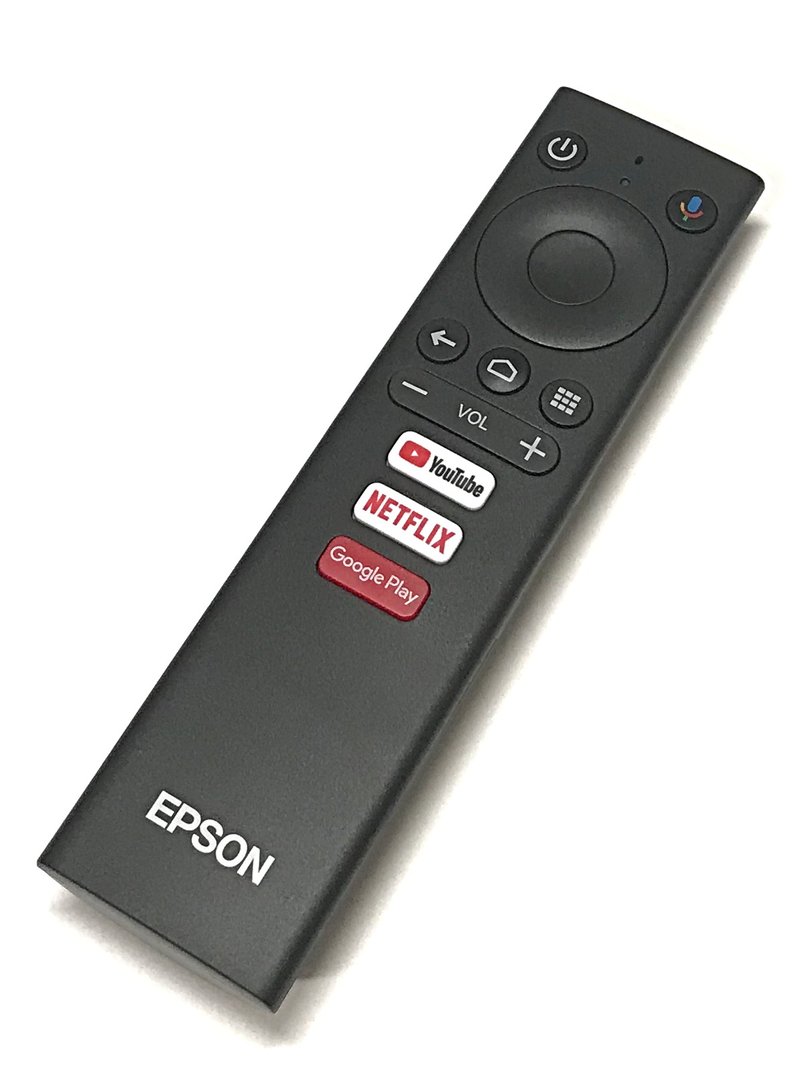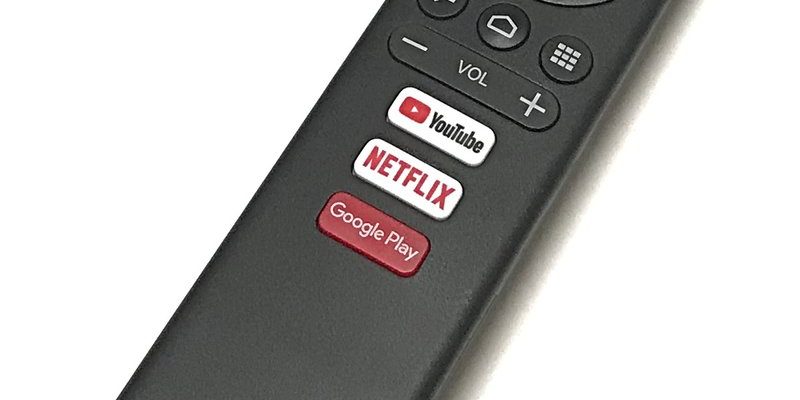
Well, here’s the thing: a lot of us have daydreamed about ditching the remote chaos. But can these remotes from Epson, designed for their lineup of projectors, actually control your streaming stick or box too? Let me break it down in plain English, the way I’d explain it to my cousin who still thinks “HDMI” is a new slang word. Spoiler: there’s a bit of good news, a bit of tech magic, and a few limits you should know about.
Oh, and if you’re picturing a chunky, button-heavy remote (maybe with some cryptic symbols), you’re not alone. Epson projector remotes aren’t always the fanciest gadgets, but they might have a few tricks hiding under those plastic buttons. Let’s untangle if those tricks include commanding your streaming setup.
How Do Epson Projector Remotes Actually Work?
First off, Epson projector remotes are pretty straightforward. They’re designed, first and foremost, for one job: controlling the projector itself. That means things like powering on or off, adjusting brightness, switching inputs, and tweaking the focus. You know, all the stuff you need to get that big, bright picture up on your wall.
When you click those buttons, the remote sends out invisible signals, usually using infrared (IR) light. It’s kind of like Morse code for your electronics, with each button sending its unique command. The projector has a little IR receiver, and when it sees the code, it does what it’s told. Simple, right?
But here’s where things get interesting: some remotes—the fancy ones—can do a bit more. A few Epson models include extra buttons labeled “HDMI Control” or “CEC.” If your streaming device and projector both play nicely with a technology called HDMI-CEC, this opens a door for some cross-device magic. But before you get too excited, not every remote or every streamer will cooperate.
What Is HDMI-CEC and Why Does It Matter?
Let me explain HDMI-CEC in plain terms. CEC stands for “Consumer Electronics Control.” It’s built into most modern HDMI cables and lets your gadgets talk behind the scenes. Think of it as a group chat for your TV, projector, soundbar, and streaming sticks—all connected via HDMI.
When it works, HDMI-CEC lets you do stuff like:
- Turn on everything (projector, streamer, speakers) with a single button press
- Control your streaming device’s basic functions (play, pause, volume) from the projector’s remote
- Automatically switch inputs when you start up your streamer
But—big “but” here—it only works if both your projector and streaming device support HDMI-CEC, and if it’s actually enabled in both menus. Not all Epson projectors or remotes have this feature, and some streaming sticks (looking at you, older Rokus) just don’t cooperate.
Pro tip: If you spot a setting called “HDMI Link” or “CEC” in your Epson projector menu, that’s your golden ticket to a simpler setup.
Pairing and Syncing: Can You Directly Control a Streaming Device?
Here’s the crux: most Epson projector remotes *can’t* directly “pair” or sync with a streaming device the way a universal remote or Bluetooth remote does. You can’t just press a code or hold down a button and expect your Epson remote to magically take over your Roku or Fire Stick. They aren’t programmed to do that.
Instead, all the magic—when it happens—relies on HDMI-CEC. The remote sends a signal to the projector, the projector passes a message through the HDMI cable, and then maybe, just maybe, the streaming device responds. It’s like whisper-down-the-lane, but with electronics.
So, if you’re thinking about entering a code or resetting the remote to work like an all-in-one commander, you’ll be disappointed. There’s no Epson “secret code” or pairing trick for direct streaming device control. Your best bet is getting HDMI-CEC to work, and even then, you’ll usually only get basic functions like play, pause, and maybe some navigation—not full access to every feature.
Streaming Device Compatibility: What Works and What Doesn’t?
You might be wondering, “Okay, so which streaming devices actually play nice with my Epson remote?” The quick answer: it’s a mixed bag.
Let’s break it down with real-world examples:
- Apple TV: Generally supports HDMI-CEC and plays pretty well with projectors that enable the feature. You may be able to wake your Apple TV and control basic playback with your Epson remote—if everything’s set up just right.
- Amazon Fire Stick: Most newer models support HDMI-CEC, so you might get basic control (power, play/pause). But don’t expect full menu navigation.
- Roku: Most new Rokus (especially those with “Roku TV Ready” branding) work with CEC, but older sticks may ignore your remote entirely.
- Google Chromecast: Chromecast devices often support power and input switching via CEC but don’t expect to browse YouTube with your projector remote.
If your streaming device isn’t responding at all, double-check that HDMI-CEC is enabled on both ends and that you’re using a good-quality HDMI cable. Sometimes, simply unplugging and replugging resets the “handshake” and gets things talking again. Honestly, troubleshooting HDMI-CEC can feel a little like restarting your WiFi—annoying, but surprisingly effective.
Troubleshooting Tips and Common Roadblocks
Here’s where the rubber meets the road. Even when everything should work, you might hit a snag or two. The most frequent problems people run into are:
- CEC Settings Disabled: Either the projector or streaming device may have HDMI-CEC turned off by default. Dig into the menus (“Settings > HDMI Link” for many Epsons) and flip that switch.
- Batteries Running Low: It’s basic, but if your remote’s battery is on its last leg, signals get weird or drop out completely. If in doubt, swap for a fresh pair.
- Wrong HDMI Port: Some projectors only enable CEC on specific ports. Try switching your streaming device to another input to see if that helps.
- Poor HDMI Cable: Cheap or damaged cables can mess with CEC signals. If your equipment is acting stubborn, try a nicer (or just newer) HDMI cable.
- Out-of-Sync Devices: Sometimes the projector and streamer need to “relearn” each other. Unplug both for a minute, then reconnect and reboot.
A little patience goes a long way. I’ve personally spent 20 minutes fiddling with settings only to discover my cat had blocked the IR receiver with her tail. Yup, sometimes the biggest trouble-shooter is just moving furniture or clearing clutter.
Universal Remotes vs Epson Remotes: Should You Upgrade?
If your heart is set on controlling absolutely everything—scrolling streaming menus, searching with a keyboard, even adjusting your sound system’s EQ—you might want to consider a universal remote. Those gadgets are designed to be code-wizards, letting you pair, reset, and sync with dozens (sometimes hundreds) of devices. They work by storing IR codes for every major brand and sometimes connect via Bluetooth or WiFi.
Epson projector remotes, by comparison, are more like specialists: excellent at controlling the projector, sometimes handy for basic streaming commands, but not star performers for total home theater domination.
One thing to watch for: even high-end universal remotes can struggle with new devices or weird brand quirks—especially when a device only uses Bluetooth or WiFi, as many modern streamers do. But if you want true all-in-one control, a universal remote is your best bet. Just be prepared for a bit of initial setup and a drawer full of instruction manuals.
When Does It Make Sense to Use an Epson Remote for Streaming?
Honestly, if your setup is simple—say, you only watch Netflix and YouTube, and you don’t mind a little limited functionality—the Epson remote might fit the bill. For casual users who just want to turn things on and off, pick an input, and hit play or pause, the combination of HDMI-CEC and your projector remote can be good enough.
But, if you’re the kind of person who wants to search by voice, load up obscure streaming apps, or format subtitles in three languages, you’ll get frustrated fast. There’s only so much you can do through the basic CEC handshake.
For parents, guests, or tech-averse roommates, keeping things simple with just the Epson remote can actually be a lifesaver. Fewer buttons, fewer chances to accidentally factory reset your Roku while trying to change the volume.
Final Thoughts: Can an Epson Projector Remote Replace Your Streaming Remote?
Here’s my honest take: Epson projector remotes can *sometimes* control streaming devices, but usually only in the most basic sense, thanks to HDMI-CEC. You’ll get on/off and a few playback commands if the stars (and the device settings) align. But don’t expect to toss out your dedicated streaming remote just yet.
If you’re craving true convenience and flexibility—think scrolling, searching, and full menu navigation—you’ll need either a universal remote or to keep juggling a couple of remotes. That’s just the reality of how these systems were built.
But hey, for a lot of living rooms and movie nights, a simple setup is the best setup. If you can get away with just the Epson projector remote calling the shots, consider it a small win in the war against remote clutter. And if not? At least now, you know exactly why—and what to try next.
So next time you’re settling in for movie night, and you see your Epson projector remote, give it a try with your streaming device. It might just surprise you, or at the very least, remind you that technology is always throwing us a curveball or two.
